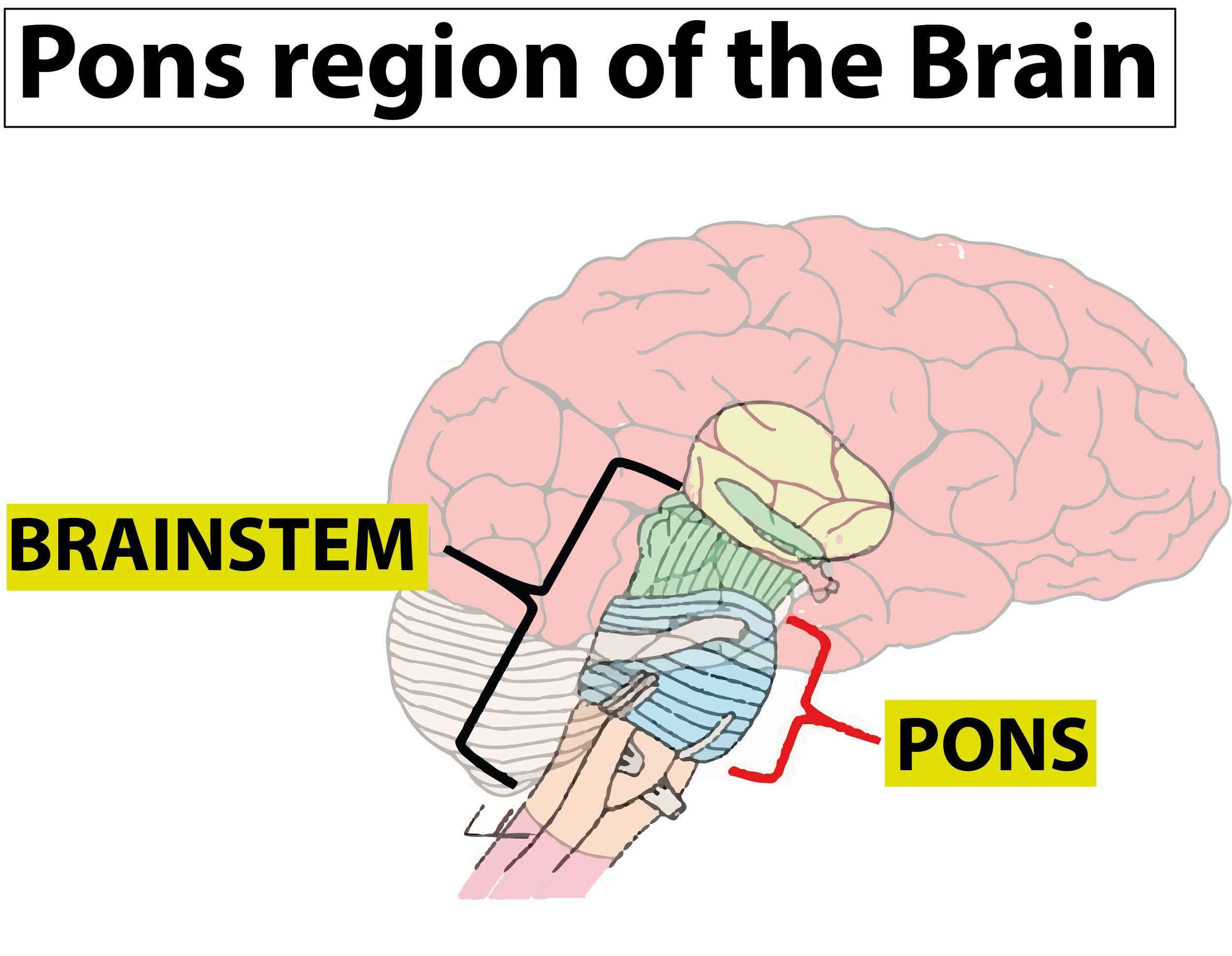
Pneumotaxic center which can moderate the functions of the rhythmic respiratory center is present in
(a) Pons region of the brain
(b) thalamus
(c) spinal cord
(d) right cerebral hemisphere
Answer
494.1k+ views
Hint: This center is a group of neurons which is a part of the respiratory center present in the brain stem in the hindbrain. There are multiple functions carried out by the brain stem, and each function is carried out by a designated part.
Complete step by step answer:
- The rhythmic respiratory center is responsible for controlling the rhythmic respiration in the body. It is also responsible for the adjustment of respiration in homeostatic responses due to physiological changes.
- The center is made of three major respiratory groups of neurons - two present in the medulla and one in the pons.
- The two regions in the medulla responsible for respiration are the dorsal respiratory group and the ventral respiratory group. Pons has the pontine respiratory group which has two centers - the pneumotaxic center and the apneustic center.
- The pneumotaxic center is located in the upper part of the pons and it controls both the rate and control of breathing.

- The pneumotaxic center is antagonistic to the apneustic center as it is responsible for inhibiting inspiration and cyclically inhibits inhalation. It is known as an ‘inspiratory off-switch.’
- Respiration in the body is present in the form of neural respiration and cellular respiration.
- The dorsal respiratory group initiates inspiration/inhalation. The ventral respiratory group contains groups of neurons that initiate exhalation.
So, the correct answer is the ‘(a) Pons region of the brain’.
Note:
- Damage to the respiratory center causes breathing disorders which cause the patient to be dependent on mechanical ventilation.
- The absence of this center results in an increase in depth of respiration and a decrease in respiratory rate.
Complete step by step answer:
- The rhythmic respiratory center is responsible for controlling the rhythmic respiration in the body. It is also responsible for the adjustment of respiration in homeostatic responses due to physiological changes.
- The center is made of three major respiratory groups of neurons - two present in the medulla and one in the pons.
- The two regions in the medulla responsible for respiration are the dorsal respiratory group and the ventral respiratory group. Pons has the pontine respiratory group which has two centers - the pneumotaxic center and the apneustic center.
- The pneumotaxic center is located in the upper part of the pons and it controls both the rate and control of breathing.

- The pneumotaxic center is antagonistic to the apneustic center as it is responsible for inhibiting inspiration and cyclically inhibits inhalation. It is known as an ‘inspiratory off-switch.’
- Respiration in the body is present in the form of neural respiration and cellular respiration.
- The dorsal respiratory group initiates inspiration/inhalation. The ventral respiratory group contains groups of neurons that initiate exhalation.
So, the correct answer is the ‘(a) Pons region of the brain’.
Note:
- Damage to the respiratory center causes breathing disorders which cause the patient to be dependent on mechanical ventilation.
- The absence of this center results in an increase in depth of respiration and a decrease in respiratory rate.
Recently Updated Pages
Master Class 11 Economics: Engaging Questions & Answers for Success

Master Class 11 Business Studies: Engaging Questions & Answers for Success

Master Class 11 Accountancy: Engaging Questions & Answers for Success

Master Class 11 English: Engaging Questions & Answers for Success

Master Class 11 Computer Science: Engaging Questions & Answers for Success

Master Class 11 Maths: Engaging Questions & Answers for Success

Trending doubts
State and prove Bernoullis theorem class 11 physics CBSE

1 ton equals to A 100 kg B 1000 kg C 10 kg D 10000 class 11 physics CBSE

State the laws of reflection of light

One Metric ton is equal to kg A 10000 B 1000 C 100 class 11 physics CBSE

Difference Between Prokaryotic Cells and Eukaryotic Cells

1 Quintal is equal to a 110 kg b 10 kg c 100kg d 1000 class 11 physics CBSE




